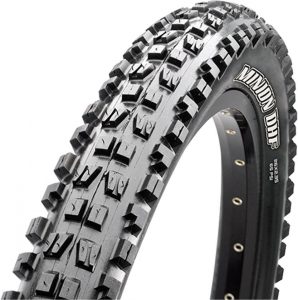Mountain bikes and road bikes are used differently and require different effort to ride. What are the differences for fitness and more?
Mountain bikes vs road bikes is perhaps one of the most debated topics in bike comparisons. In many ways they are at opposite ends of the bike spectrum by purpose. Today I’m going to compare these bikes to show what the real differences are
Bike Riding Terrain
Mountain Bike
Mountain bikes are bikes designed to be used in rugged conditions. They are designed to take you as a rider to areas that are not tame and can have a little danger involved.
There are more than one type of mountain bike. There are Cross Country (XC) mountain bikes and trail mountain bikes. You can read my article on xc vs trail bikes for more information. For the puspose of this article, I will use trail bikes for comparison as they are the most rugged bikes meant for downhill mountain biking.
Trail bikes are used to take a path from the top of the mountain to the bottom and can involve going over big rocks, jumps, drops, fallen trees, and wet surfaces.
Mountain bikes can even be used on the road sometimes, under the proper conditions. In fact, they work well as a city bike due to the front suspension and getting up onto curbs easier. Many courier services choose to use cross country mountain bikes for this reason.
As a general rule, if you are looking to take your bike somewhere with dirt, rocks, and more, then you’ll want a mountain bike.
Road Bike
Road bikes are meant to be used mainly for road cycling on smooth and very well maintained surfaces such as quality paved roads. These bikes are meant to be light and fast under extremely tame surfaces. These bikes road manners are excellent when the roads are in great shape.
When you are riding paved roads you also have different obstacles to contend with … cars. Cars bring a whole new level of danger to biking. On the road riding a bike can be dangerous so make sure to keep an eye on vehicles around you, especially in the city.
If you want to get a mountain bike and wondering how well it fares in the urban environment, I put together a post on riding a mountain bike in the city to give you an idea of what to expect.
Road bikes can make excellent city bikes due to the cement and pavement nature of many cities.
Front Suspension
Mountain Bike
Mountain bikes typically have a front suspension that is capable of up to 10 inches of suspension travel. The suspension will take the hit from a surface irregularity instead of passing it onto the rider. In turn, this allow the rider to keep control of the bike as they are mostly isolated from medium surface imperfections (which is most of the downhill trails).
Many mountain bikes have adjustable suspension components and as such the rider can dial in just how much suspension they want active. Some bikers prefer to be completely isolated and almost floating over normal rocks. Some riders prefer less suspension dampening and to have more feedback of the surfaces they are going over.
How much the suspension is used is personal preference but without a quality front suspension each rock would be a bone-jarring experience and it would ruin the experience.
To some extent, a front suspension of at least some travel would actually be beneficial on roads that have rough areas and potholes.
Road Bike
Road bikes typically have no front suspension to save weight and because they are designed to used on smooth surfaces that don’t require a suspension. Most of the Huffy bikes we all used as kids had no suspension, just the frame connected to the front forks connected to the wheel. If you remember, hitting a pothole was jarring and you could feel it in the arms and shoulders. Road bikes are like that.
Suffice to say, you wouldn’t want to take a road bike on a trail as the ride would be so rough it would be hard to keep control.
Rear Suspension
Mountain Bike
Mountain bikes typically have anywhere from 3-4 inches of travel on an XC bike to 10 inches of travel on a trail bike. Trail bikes are meant for harsher conditions which is why it has more suspension travel.
The reason for the rear suspension is the same reason as for the front suspension…to take up and absorb the bumps in the trails.
Mountain bikes with a full rear suspension don’t work as well as road bikes because of a lot of wasted energy. When you pedal, the bike is moving up and down and wasting some that energy that would normally help it to go forward.
Road Bike
Road bikes have zero rear suspension. If you hit a pothole, you’ll feel it from the seat up so you’ll feel the hit through your whole body. Obviously this is better than the front wheels being thrown off their intended path when near cars but it can make for a rough ride if the roads are in bad condition.
The reason for the lack of rear suspension is that when the roads are great, no energy is wasted on the vertical motion of the rear wheel and it stays planted to the asphalt and it’s very efficient.
Wheels and Tires
Mountain Bike
Mountain bikes have tires either around 2.2 inches wide for a XC bike or around 3 inches for a trail bike. Typically these are mounted on 29 inch wheels. Many times these tires are knobby and help to get a grip on less than ideal conditions.
These tires with offroad tread on wider tires wear down quickly when used on pavement and have a rougher ride on nice paved roads. Since mtb tires have more resistance it’s more of a workout to ride them on road.
Road Bike
Road bikes have skinnier at around 2 inches wide and can be on either 27.5 or 29 inch wheels. With only wet conditions to contend with, road bike tires are smoother with less tread so there is less resistance of spinning tires.
Tires on road bikes would simply slide quite a bit on trails and rocks if they were used offroad. The road tires have less tread to lower rolling resistance so you can go faster. The average speed of a road bike is 14 to 18 mph.
Brakes
Mountain Bike
Because mountain bikes are used in wet, muddy conditions often, they typically have disc brakes attached to the center of the wheel. These brakes resist brake fade when used many times in a row and are largely unaffected by mud and water coating the tire and rim. A must have when biking down a mountain.
Road Bike
Road bikes may have disc brakes but many also still use the old caliper brakes that press on the rim. While the disc brakes are far more favored, road bikes typically don’t have the muddy conditions that dictate having to have disc brakes.
Saddle Position
Mountain Bike
When riding over tough technical terrain, mountain bikers need to be able to see the terrain and shift their weight to keep balance. Because of this, mountain bike riders sit in a very upward riding position.
Road Bike
With more ideal terrain, road bike riders can sit more leaned down to minimize wind resistance. I recommend throwing on a set of drop handlebars so that you can switch positions to whatever is comfortable.
Types of Mountain Bikes
Cross Country Mountain Bike
Cross country, or XC, bikes, are mountain bikes whose primary purpose is speed through somewhat mild terrain and paths. They are at home on singletracks, doubletracks, fire roads, dirt roads, and more. They can even do mild jumps with no issues.
Some cross country bikes have no rear suspension, and these are known as hardtail bikes.
As a rule of thumb, if you see a bike with lots of knobby tread on the tires, it’s likely to be a cross country bike.

Trail Bike
Trail bikes are an all-around bike. It is like the base model but that doesn’t mean they are cheap. They are just good at everything but don’t excel in any particular area.
Gravel Bike
Gravel bikes are in essence a road bike that has been modified to handle a variety of terrains. These are sometimes called adventure bikes.
Enduro Bike
Enduro bikes are an all-around bike but more heavy-duty than trail bikes that are meant for enduro racing. Enduro races combine the speed of cross country courses with the thrill of downhill courses.
Downhill Bike
These bikes are meant to handle the rigors of jumps and drops on downhill courses. The rider is taken to the top of the hill usually on a lift, and then ride downhill over an exciting, adrenaline-inducing course that involves getting some air, navigating across skinnys, and going over rocks and roots.
Because of the usual paths, these bikes have big suspension systems to handle the terrain.
Electric Bike
Electric bikes, or e-bikes, are normal mountain bikes that have an electric motor that augments propulsion. These vary from small motors that help the bike to full-on power that is closer to what you might see in a moped.
Hybrid Bike
Hybrid bikes are a bit different. Hybrid bikes blend characteristics of more specialized mountain bikes, and sometimes road bikes. These hybrid bikes can perform very well in a variety of terrain and circumstances.
Which Bike Is Right For You?
Road bikes and mountain bikes are very different and typically you will need to choose what type of terrain you will ride on before choosing the bike.
However, if I wanted a general purpose bike I would choose a XC bike with suspension lockouts so I can adjust how much suspension travel or not allow any suspension travel depending on needs. Keeping a spare set of thinner wheels, a XC bike can be used on everything from paved roads to mild trails including even some jumps.
If you are set on downhill mountain biking with many jumps, then likely a full-on trail bike is going to be your choice. Remember to pack your gear so you have with you all that you need for yourself and your bike since you’ll be a bit away from civilization.
The key is to first identify your biking needs and then choose your bike. Make sure you get the right size bike for you so that you have the best control to enjoy this fun hobby.





